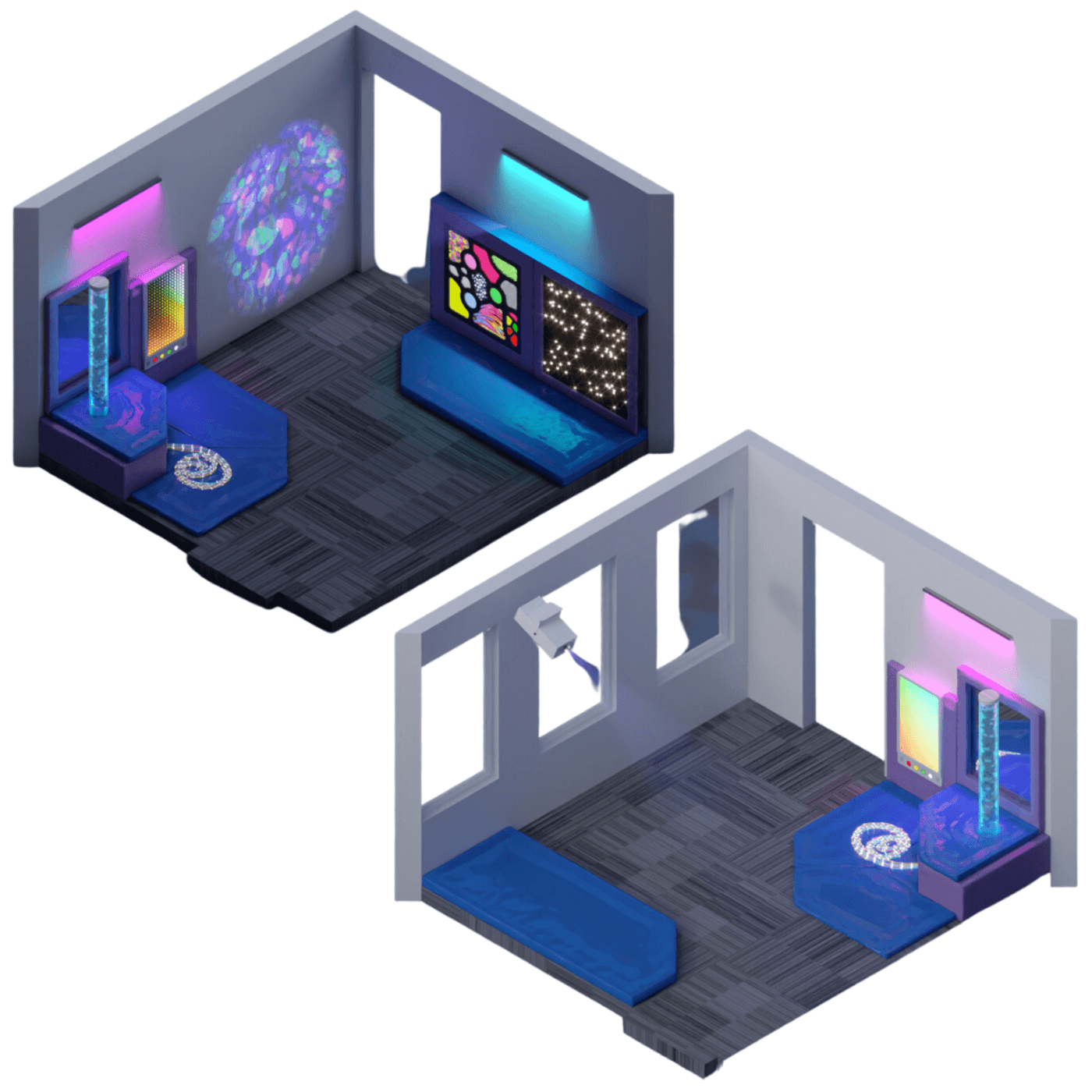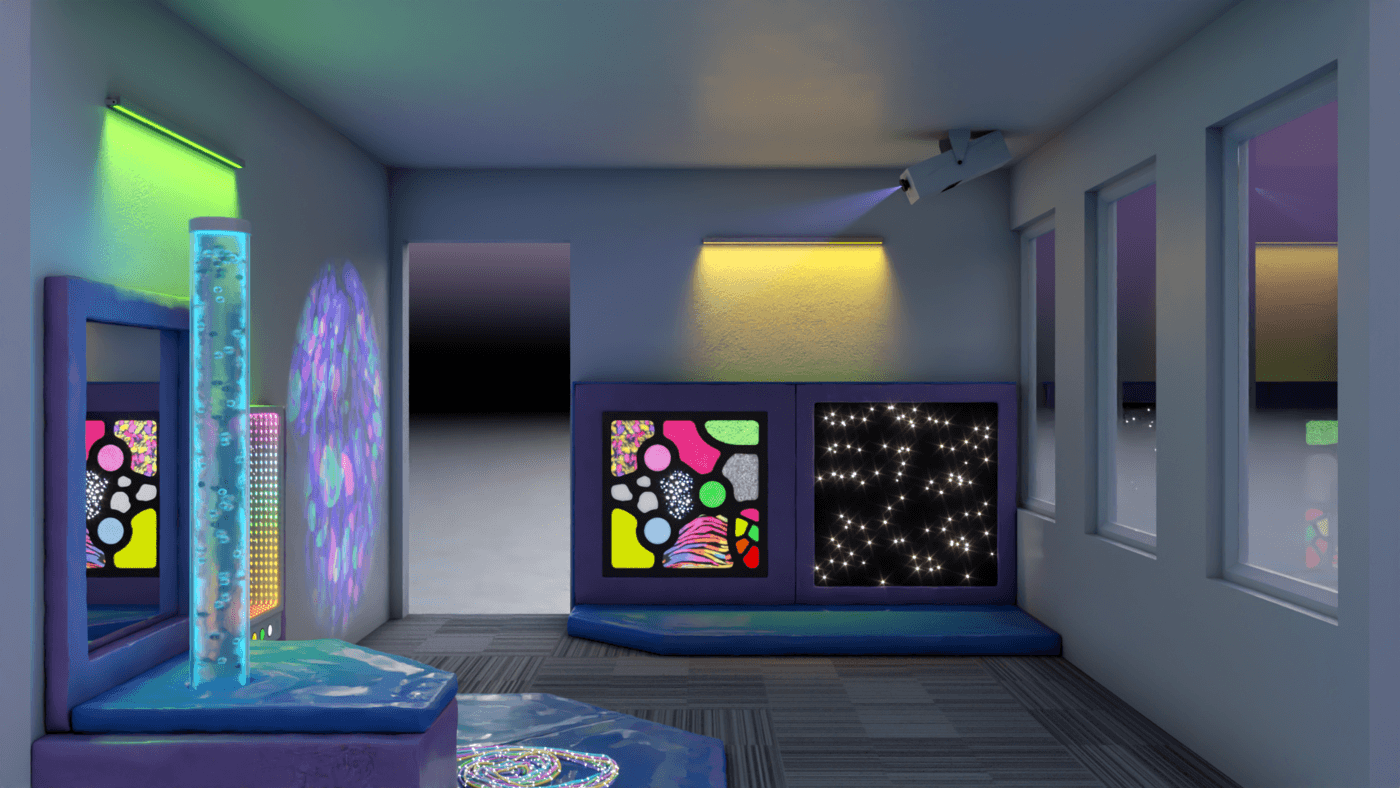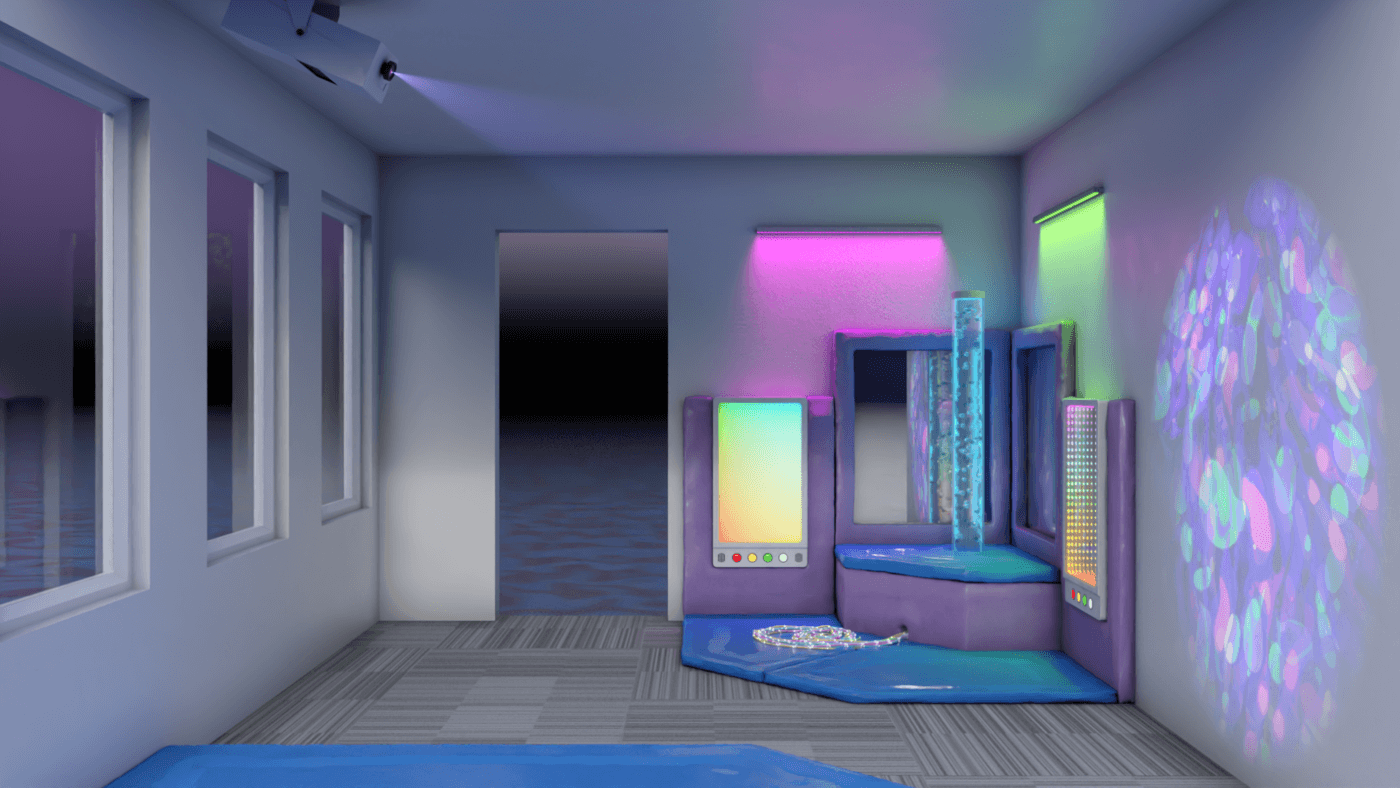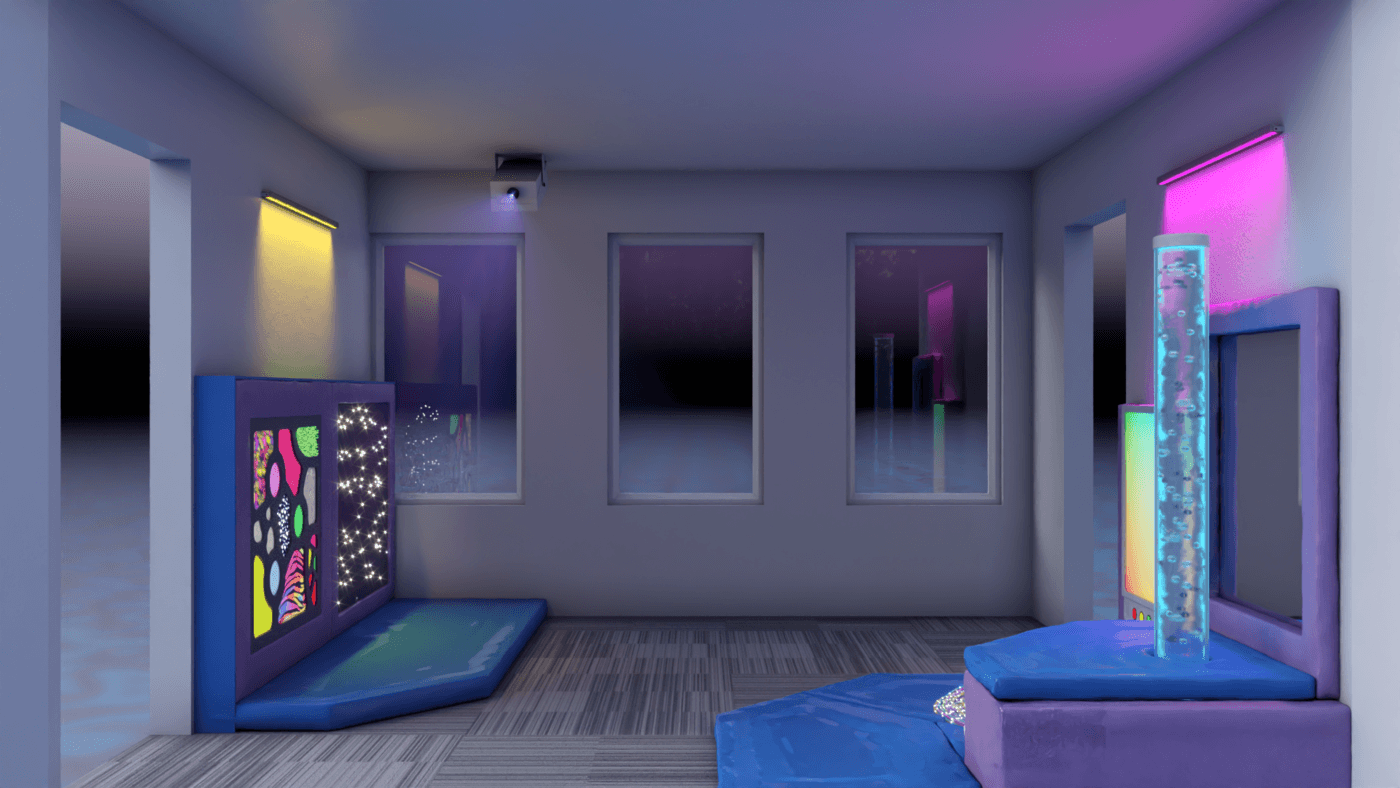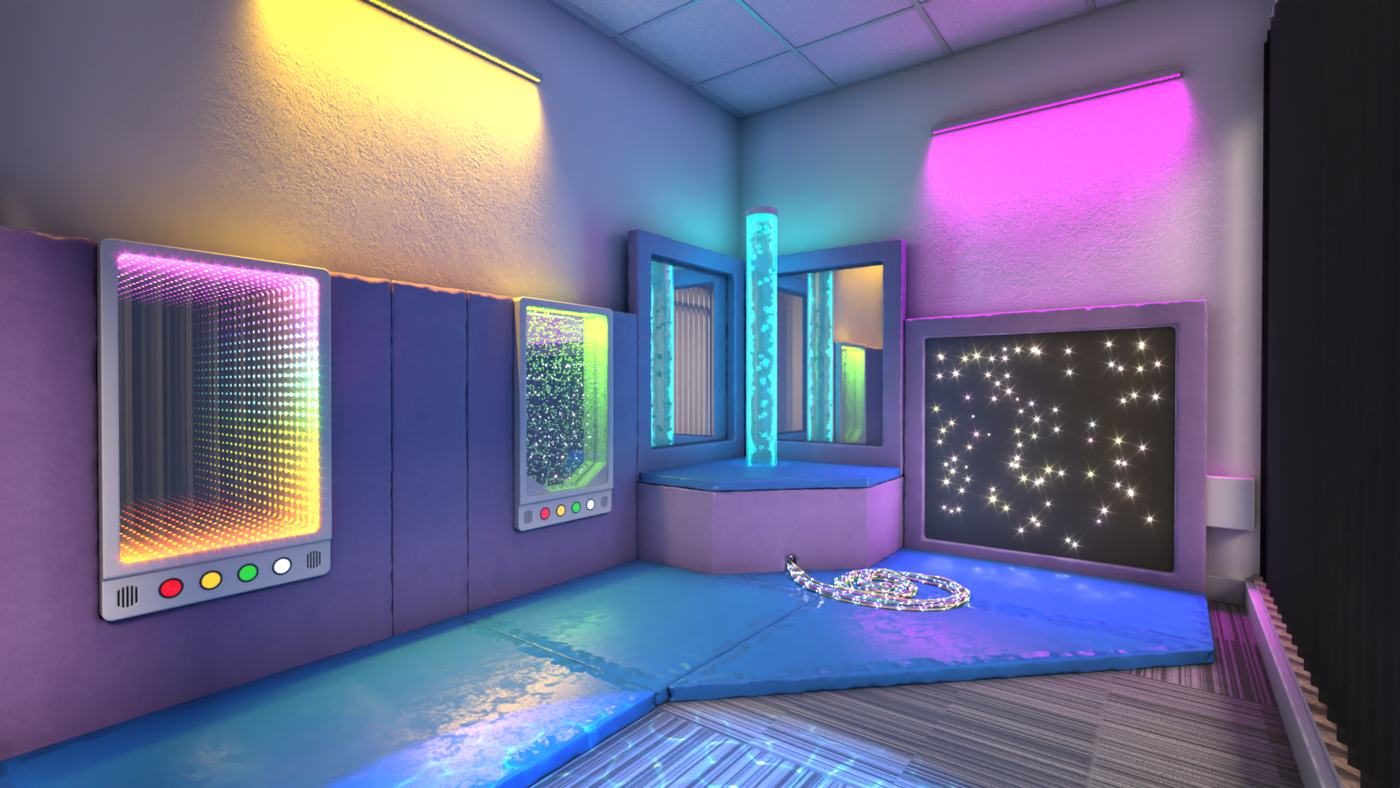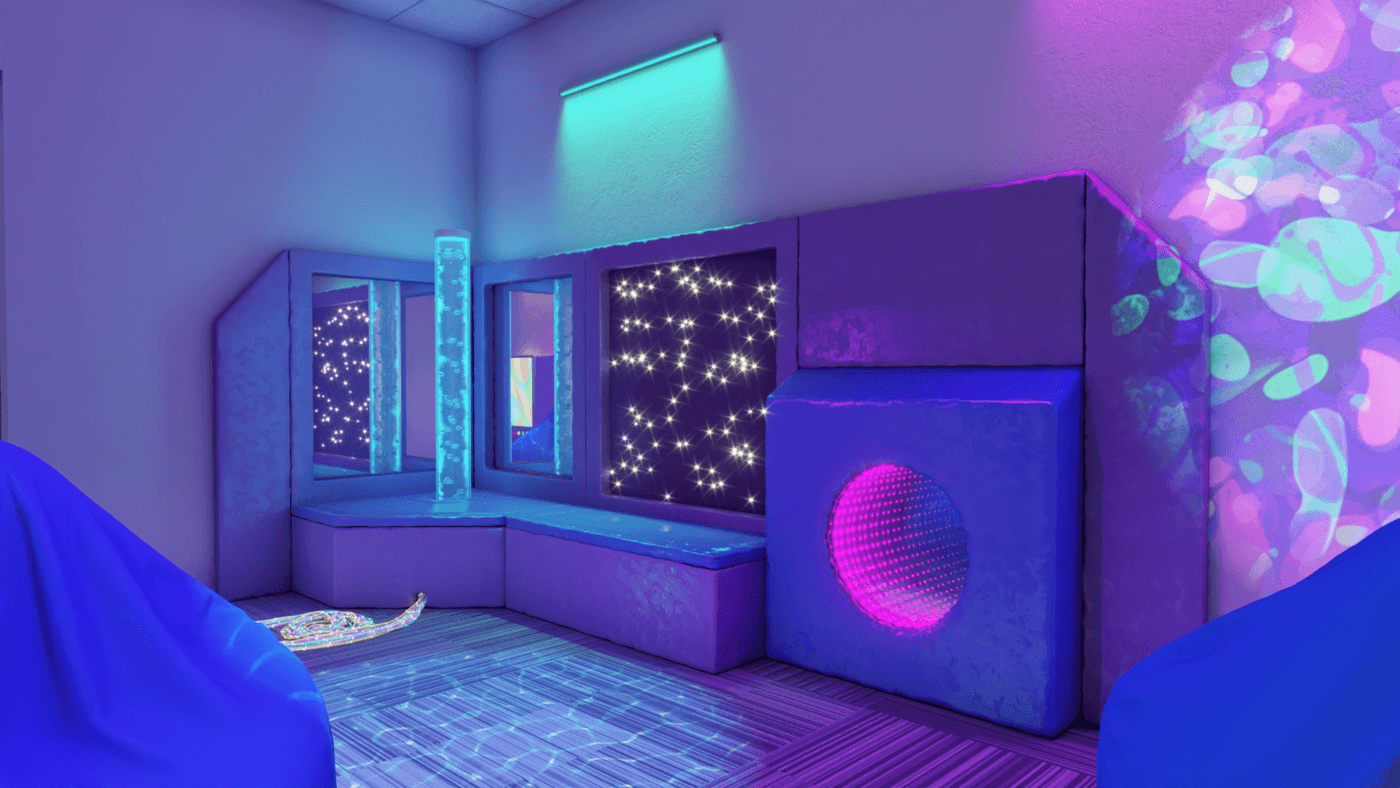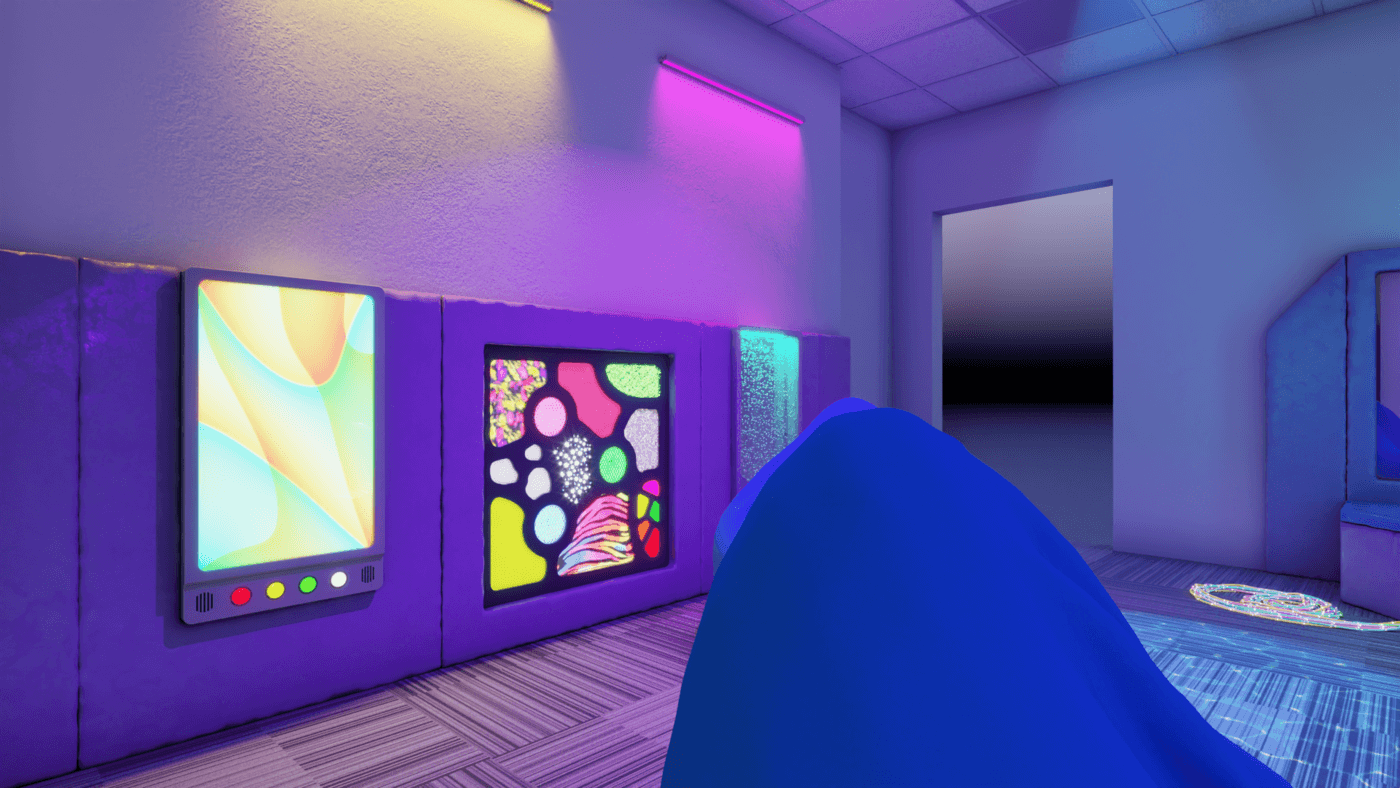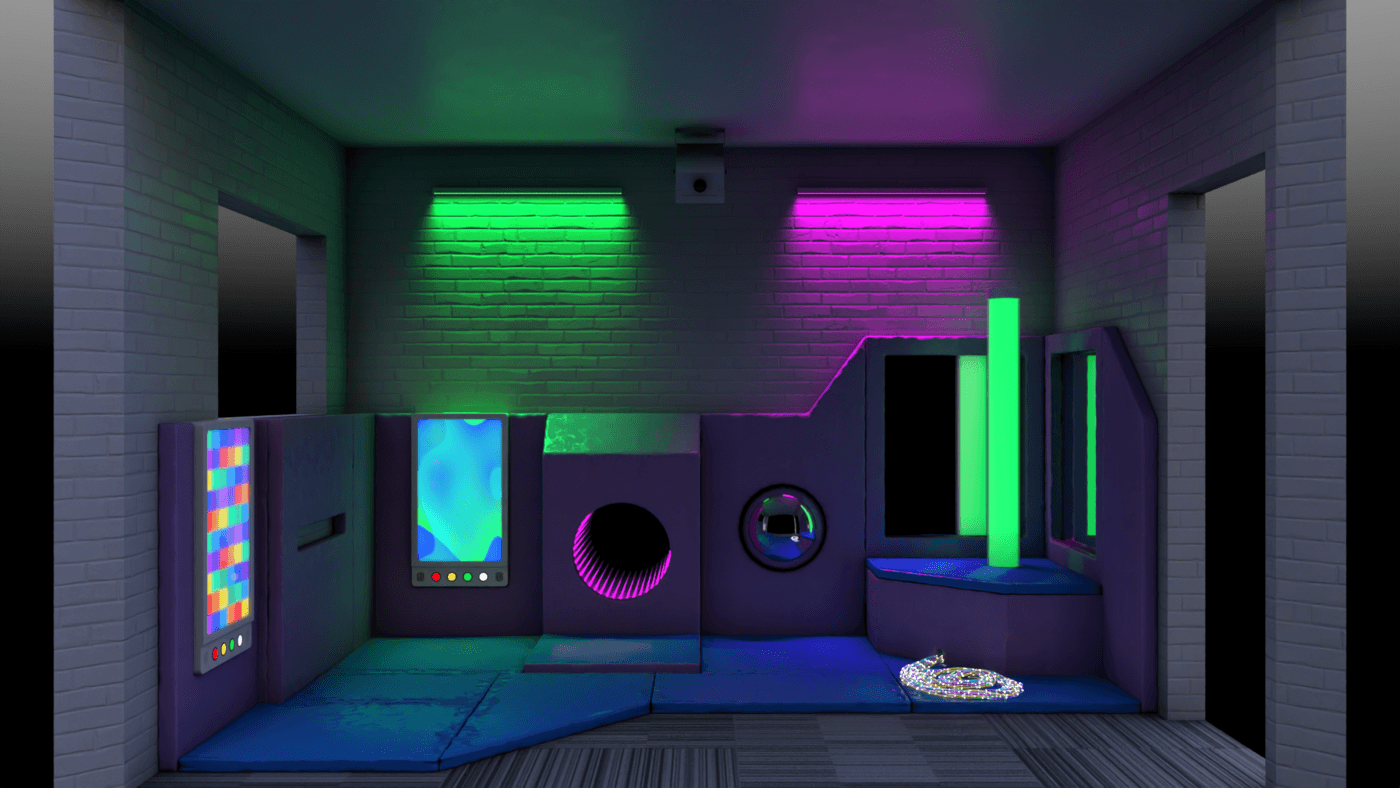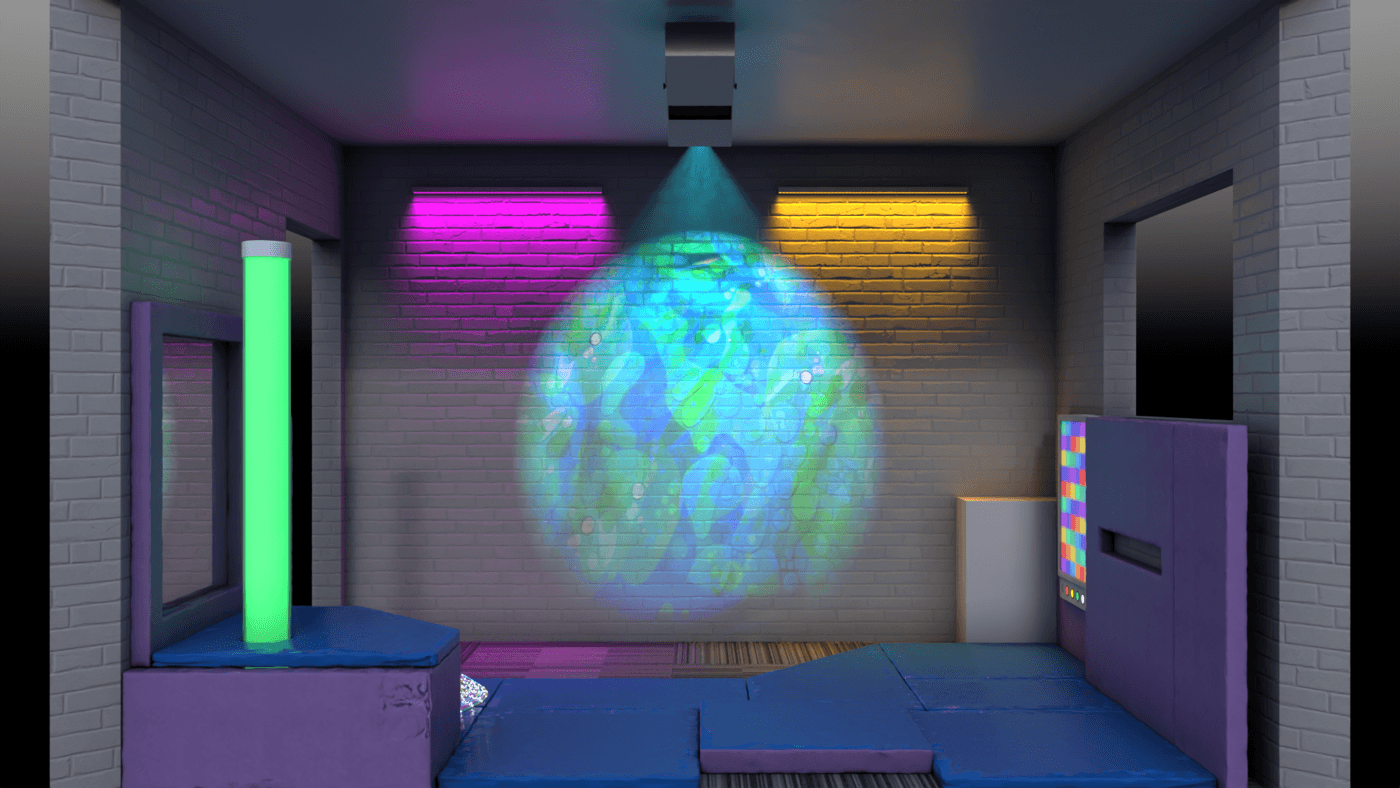What should I consider when creating a sensory room?
Creating an impactful sensory space requires factoring in a range of environmental and user considerations during the design process. This ensures that the room efficiently and effectively caters to the participants' needs.
User Profile
- Who will be the main users of the new sensory space? What age range are you providing for? Are there specific conditions or needs you want to address? How many people will use the space at one time? The more we know about the people who will be using the room the better we can serve those needs with tailored sensory elements.
Ambience Elements
- What do you want your sensory room to do? Thoughtful integration of visual, acoustic, and aroma aspects like colour schemes, acoustics, scents and lighting strongly influence mood stimulation and calming. Materials with various textures add tactile layers and unintentional noise bounce too.
Size and Layout
- Almost any space can be turned into an effective sensory room, some more challenging than others but those are the ones we like best! Effective sensory rooms remove the outside world to create a controllable space inside to support the individual. The more this can be achieved the better the outcomes. In larger rooms we recommend zoning so different activities can take place with individuals at the same time.
Accessibility and Safety
- If you are providing for wheelchair users remember that as well as a space to manoeuvre they will also benefit from being able to get out of their chairs and stretch out to reduce cramping of muscles. They may need adaptive support and hoists to facilitate this. We can seamlessly design these features in to a room for you. We choose materials that are robust and easy to clean as well as compliant with fire and safety regulations too.
What are our sensory solutions?
We are often asked for designs to meet specific challenges. We are also highly skilled in creating multi-sensory spaces that cover the full spectrum of needs from calming to stimulating in the one place. It is all about putting you in control.
- Specially designed spaces for sensory regulation and stimulation.
- Impact senses through music, noises, aromas, vibrations, and more.
- Customisable equipment that adapts as user needs evolve over time.
- The ability to control the environment and adapt it to the individual.
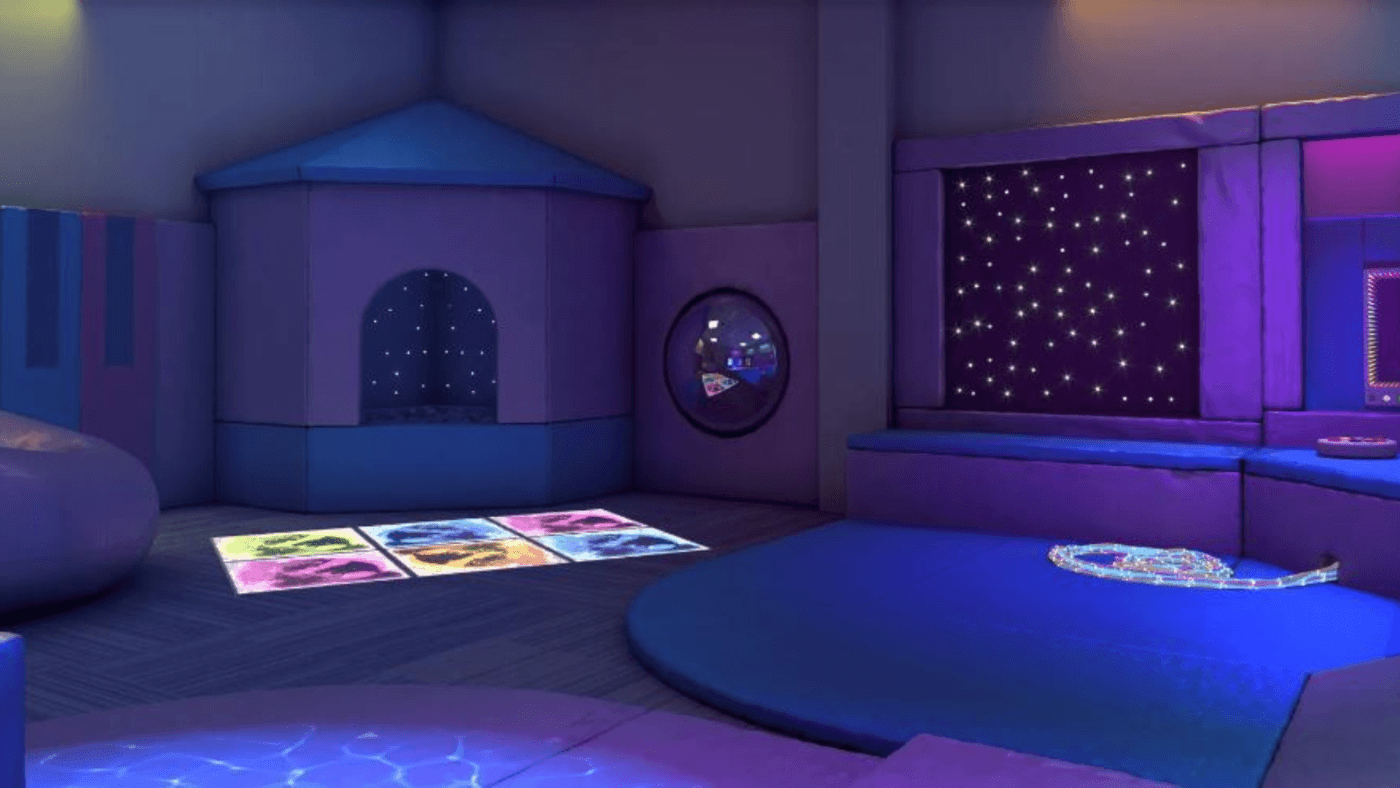
Calming and Low Stimulus Spaces
Calming sensory spaces incorporate subtle multi-sensory equipment that helps soothe and relax users. They provide a peaceful oasis when users require an escape to prevent overstimulation. Strategies include: soft hues, diffused lighting, silky textures, calming music, personally controllable spaces.
Self-Regulate in a Calming Sensory Space
Calming sensory rooms provide serene environments to self-regulate, lower stress levels and refocus when feeling anxious, overwhelmed or overstimulated. Carefully designed equipment and spaces promote emotional balance.
What are Calming Sensory Rooms?
Calming sensory rooms use subtle equipment and ambience elements to evoke relaxation, manage anxiety, and gently soothe the senses. These tranquil spaces allow users to decompress, regain composure and process emotions effectively.
The Power of Calming Sensory Spaces
Thoughtfully designed calming sensory rooms deliver impactful benefits that aid emotional balance and self-regulation.
Lowers Stress and Anxiety
The relaxing environment eases anxious thoughts and feelings of being overwhelmed, reducing agitation and meltdowns.
Improves Focus and Alertness
The change of setting from loud, crowded spaces refreshes mental clarity, attention and readiness to engage.
Increases Resilience
Productively overcoming sensory challenges and regulating emotions builds confidence in coping skills over time.
Promotes Self-Expression
A tranquil ambience encourages users to open up and communicate thoughts, feelings and sensory preferences.
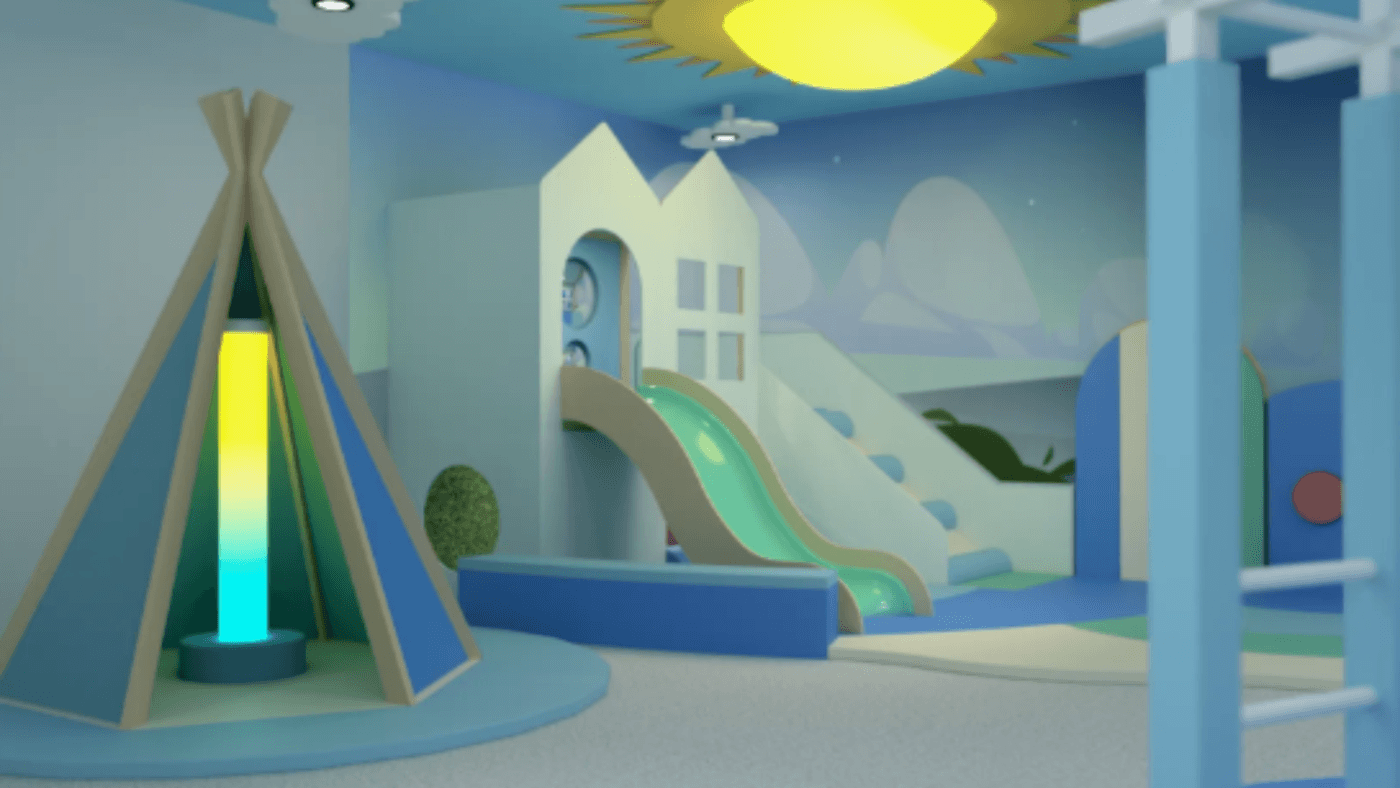
Sensory Integration Rooms
Supporting body awareness and the ability to process sensory information, these spaces help develop users' capability to interpret multisensory inputs effectively. Features are designed around auditory, tactile, oral motor, vestibular, and visual components to foster self-regulation and executive function.
Sensory Integration Rooms that Advance Abilities
Our sensory integration rooms incorporate specialised therapeutic equipment and design strategies that assist users in processing multiple sensory inputs effectively to improve capabilities around behaviour, coordination, and development.
What are Sensory Integration Rooms?
Sensory integration rooms are therapeutic spaces specifically equipped to improve users' processing and integration of sensory information through targeted equipment and activities. These rooms allow participants to safely engage with adventurous multi-sensory components including tactile, vestibular, proprioceptive, auditory, and visual stimulation elements.
Critical Developmental Benefits of Sensory Integrations Spaces
Imaginatively designed sensory integration rooms deliver impactful advantages that make substantive improvements in users' skills and behaviours.
Enhances Emotion Regulation
The controlled, supportive environment equips users with strategies to recognise emotions and self-regulate responses to sensory stimuli. Managing feelings productively builds confidence.
Improves Attention and Focus
Participants strengthen mental focus, concentration skills, and attention span through motivated engagement with the variety of sensory components and motor challenges.
Increases Body Awareness
Vestibular and proprioceptive equipment combinations develop users' understanding of body movements and spatial orientation critical for balance, posture and coordination.
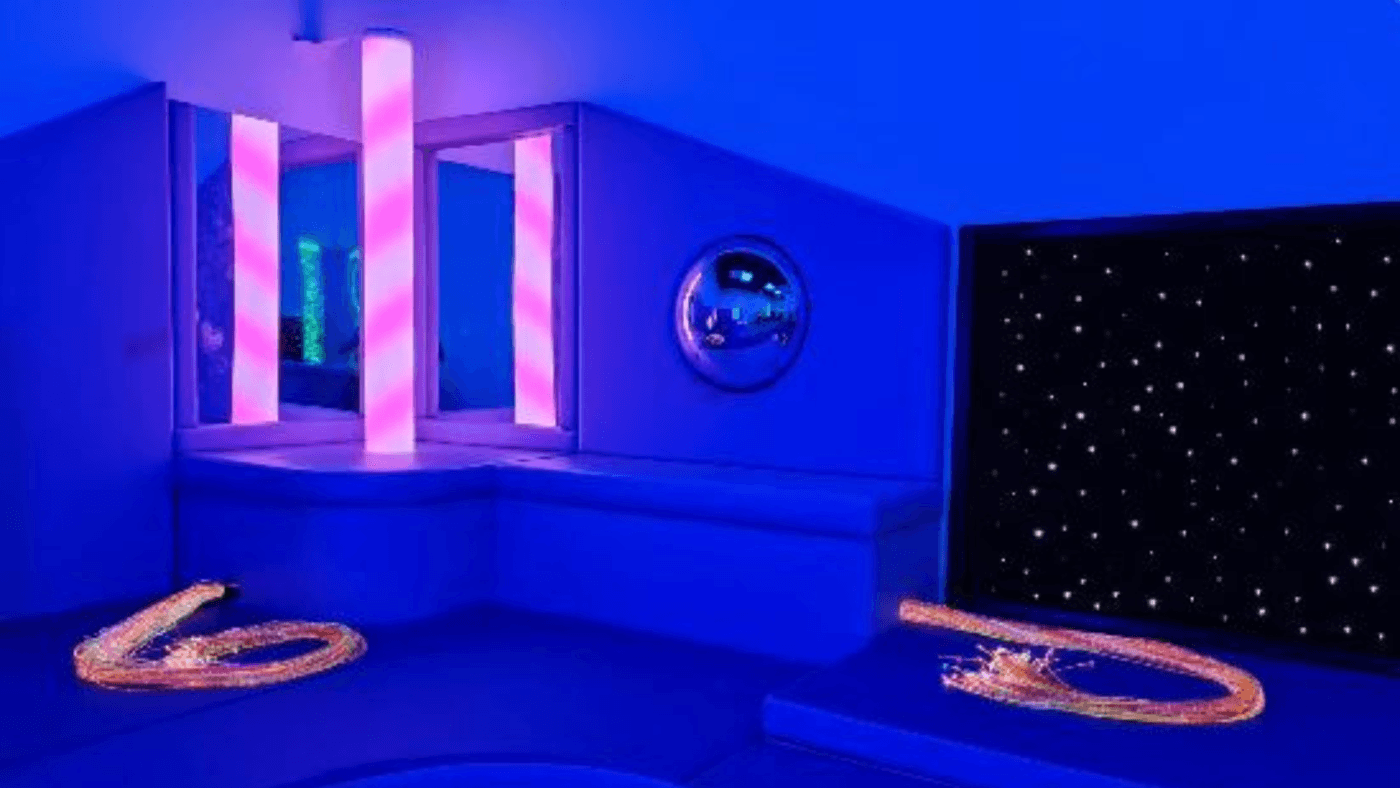
Stimulating and High Stimulus Spaces
For users requiring sensory input and active engagement, high stimulus rooms offer vibrant equipment and activity zones. Strategies for increasing stimulation include: bright, colourful lighting effects, lively sounds and music, strong tactile surfaces, invigorating scents and game elements.
Crafting Immersive Multi-Sensory Experiences
Our expertly designed multi-sensory room incorporates a wide range of equipment to create customisable spaces that can both stimulate and calm users based on need. Carefully selected lighting, textures, sounds, aromas and more are integrated to provide enriched sensory environments. Rooms promote self-regulation, focus, motor skill building and more based on participants goals.
What is a Multi-Sensory Room?
Multi-sensory rooms refer to spaces that integrate a variety of equipment and environmental elements to stimulate multiple senses. These can include lighting effects, tactile surfaces, audio systems, aroma diffusers, vibration elements and more. Rooms offer participants control over equipment to self-regulate for relaxation or engagement goals. From bright, high energy spaces to subdued, tranquil environments, multi-sensory rooms tailor to all users.
Therapeutic Advantages of Multi-Sensory Rooms
A thoughtfully designed multi-sensory room delivers a range of therapeutic and developmental benefits to participants.
Promotes Motor Skills Development
The enriching environments filled with diverse textures, surfaces, manipulatives and interactive elements intrinsically motivate movement and coordination. Crawling through tunnels fosters vestibular and proprioceptive progress. Interactive light panels develop ocular-motor control.
Encourages Social and Emotional Learning
The safe sensory environment promotes cause and effect exploration through interactive and controllable equipment. Structured group sessions can encourage relationship building in a controlled space with built-in personal self-regulation spaces to reduce anxiety and promote self-regulation.
Boosts Cognitive Focus and Alertness
Frequent exposure to multi-sensory equipment combinations boosts cognition as the mind works simultaneously processing various visual, tactile and auditory inputs, strengthening mental vitality and focus stamina.
Reduces Anxiety and Challenging Behaviours
As customised equipment combinations soothe or energize based on individual needs, multi-sensory rooms aid emotional regulation, minimising negative behaviours, fear, irritation and distress.
Tell Us How We Can Help
Fill out the form below and our team will be in touch as soon as possible.
© Evoke Techologies Ltd 2025.
An indicoll website
Privacy PolicyCookie PolicyDisclaimerAccessibility


